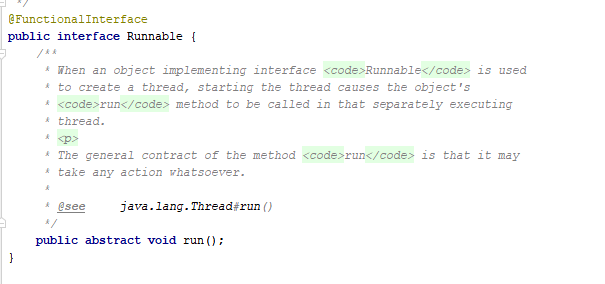一、继承Thread类创建线程类
(1)定义Thread类的子类,并重写该类的run方法,该run方法的方法体就代表了线程要完成的任务。因此把run()方法称为执行体。
(2)创建Thread子类的实例,即创建了线程对象。
(3)调用线程对象的start()方法来启动该线程。
public class ExtendThread extends Thread{
//重写run方法,run方法的方法体就是现场执行体
public void run() {
for(int i=1;i<=5;i++){
System.out.println(Thread.currentThread().getName() + " is running " + i );
//上述代码中Thread.currentThread()方法返回当前正在执行的线程对象。GetName()方法返回调用该方法的线程的名字
}
}
public static void main(String[] args){
for(int j=0;j<5;j++){
if(j==2){
new ExtendThread().start() ;
new ExtendThread().start() ;
}
}
}
}
二、实现
public class ImplementRunnable implements Runnable{
public void run(){
for(int i = 1;i <=5;i++){
System.out.println(Thread.currentThread().getName()+" "+i);
}
}
public static void main(String[] args){
for(int i = 0;i < 5;i++){
System.out.println(Thread.currentThread().getName()+" "+i);
if(i==2){
ImplementRunnable rtt = new ImplementRunnable();
new Thread(rtt,"新线程1").start();
new Thread(rtt,"新线程2").start();
}
}
}
}
三‘
public class Call implements Callable<Integer> {
@Override
public Integer call() throws Exception {
return 1;
}
}
其实: Thread类实现了Runable接口

而Runable接口里面定义了一个简单的抽象无返回值的的run()方法
